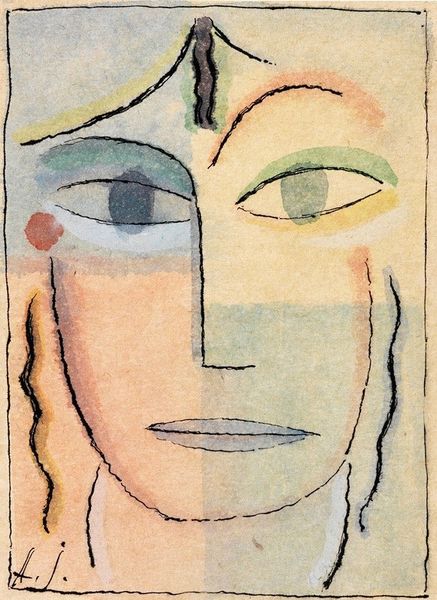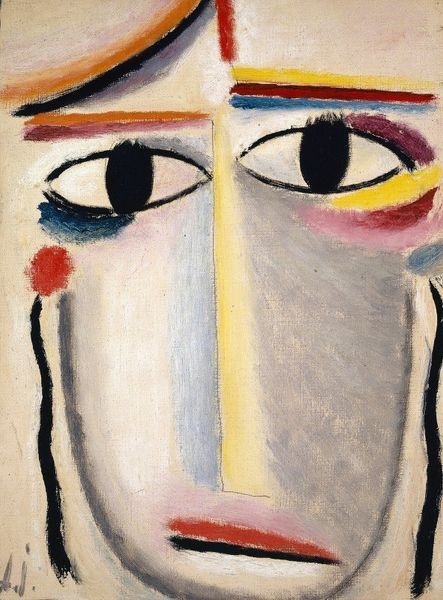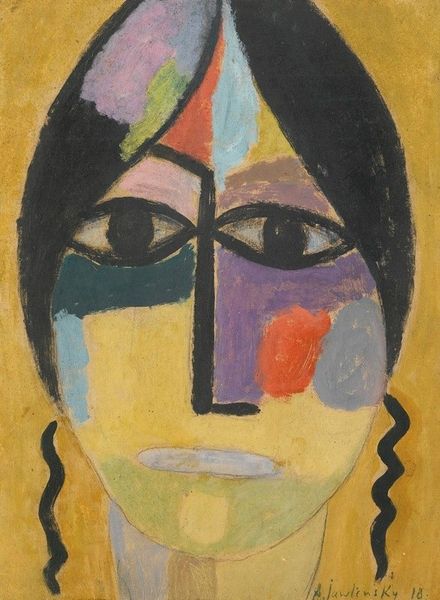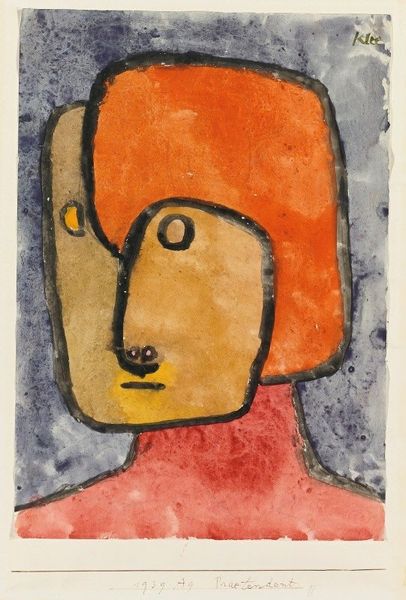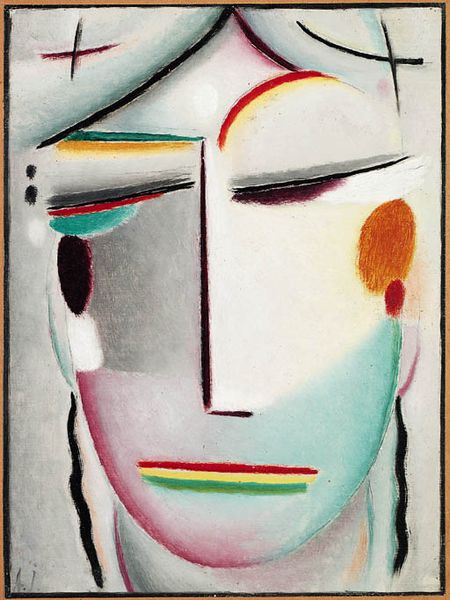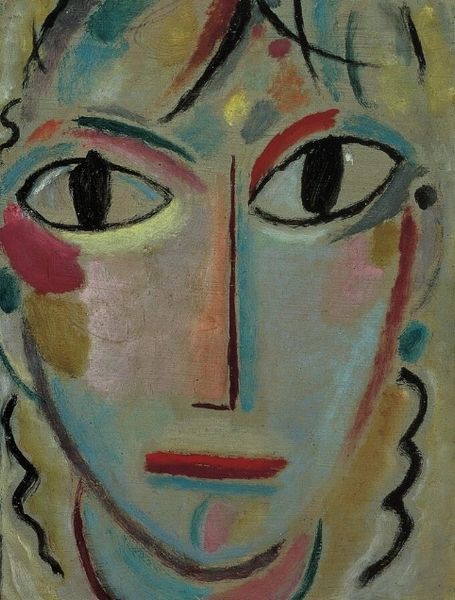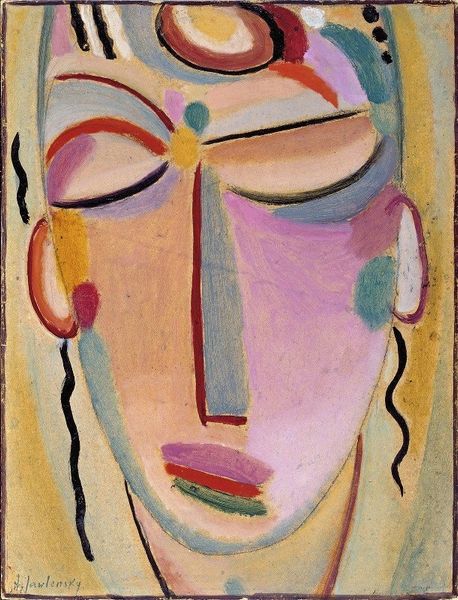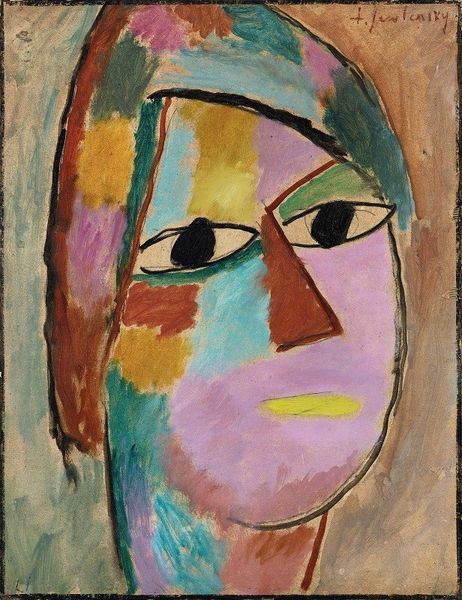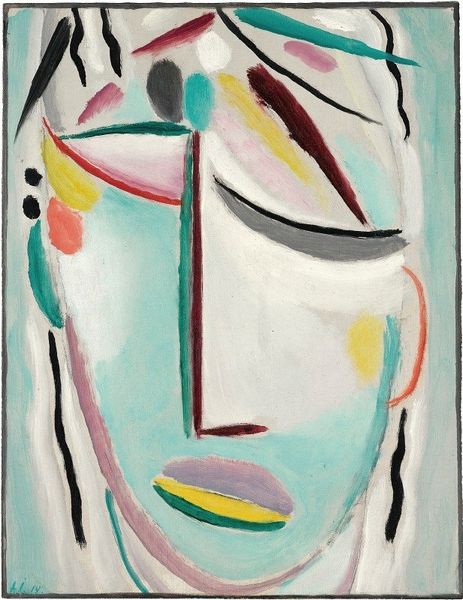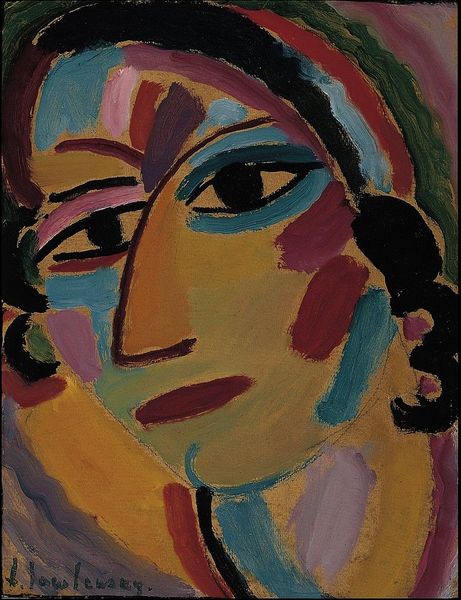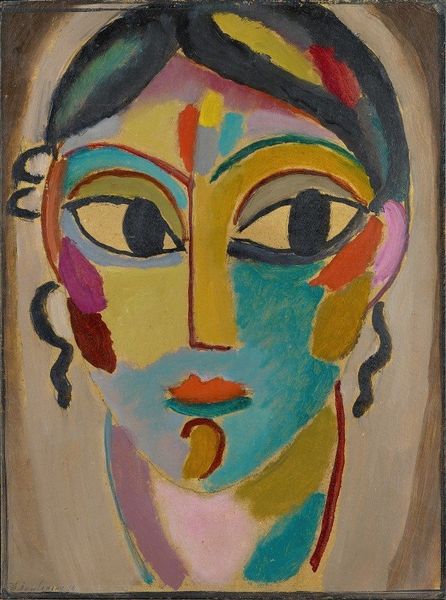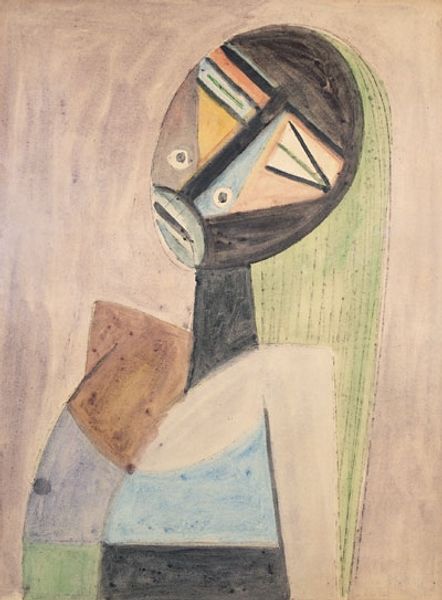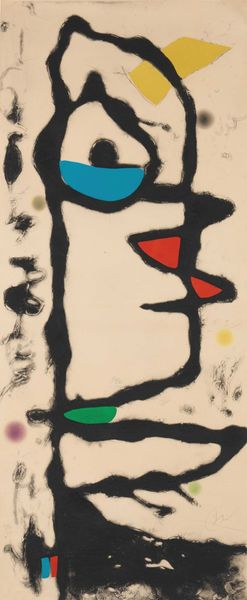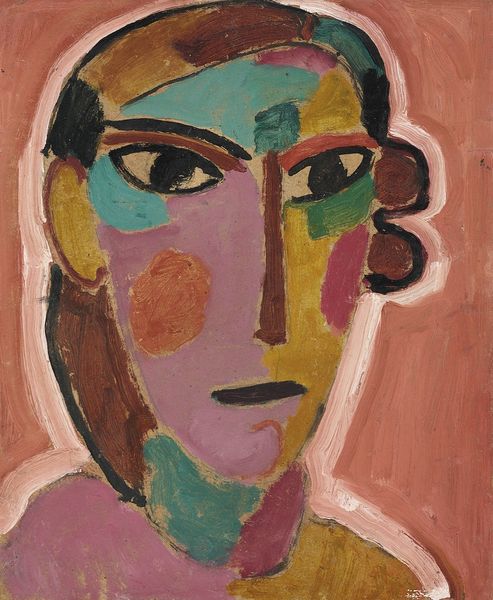
paper, watercolor
#
paper
#
abstract
#
watercolor
#
coloured pencil
#
expressionism
#
portrait drawing
#
watercolour illustration
#
portrait art
#
watercolor
Copyright: Public Domain: Artvee
Curator: Let’s spend a moment with Alexej von Jawlensky’s "Frauenkopf Femina," a watercolor and colored pencil work on paper created in 1923. Editor: There’s something both soothing and unsettling about this piece. The soft watercolor washes create a delicate feel, but the stark asymmetry of the face, the different colored eyes… it’s definitely a bit jarring. Curator: Jarring is an interesting word choice. Considering the period, nestled between the World Wars, this dissonance could be viewed as a reflection of the fragmented psyche of the time, and also a symbol of the changing roles and perception of women. Jawlensky was deeply interested in spiritualism and the expression of inner emotion, so what we see here, even in its abstraction, may represent internal turmoil. Editor: Absolutely. The eyes, in particular, capture that. The left eye, shaded in blue, seems melancholic, perhaps even closed off, while the other, a pale green, gazes outward, almost searching. Is this duality meant to signify two sides of femininity, perhaps the public and the private self? There’s also a simplified triangular shape floating over her forehead: A halo? An arrow? An antenna? What significance could that hold? Curator: That's insightful. This was during Jawlensky's abstract expressionist period, influenced by the theosophical movements swirling in intellectual circles, which sought to connect visual forms to deeper spiritual meanings. The triangle might symbolize the divine, the quest for transcendence, or perhaps even a connection to the cosmos. Remember, during this period, questions surrounding faith, the self, and society were being deeply probed. The raw emotion laid bare is part of Jawlensky's Expressionist vocabulary, inherited from predecessors like Munch and Van Gogh. Editor: The intensity in simplicity here is amazing, just basic colors on paper manage to hold such complexity. Thinking about color association over centuries, Jawlensky evokes some archetypal connections without referencing past visual languages directly. Curator: Precisely. By breaking down representational forms and focusing on colour and line, Jawlensky transcends the limitations of realistic depiction. The figure's 'femininity' is evoked without typical representations, instead the raw emotion displayed represents what it is to experience the human condition during a turbulent period. Editor: Seeing it now, I appreciate that interplay of fragility and intensity much more. There’s a rawness that’s incredibly compelling, capturing a very particular moment in history while managing to reach some essential truths. Curator: Exactly, It remains a testament to the power of art to not just mirror our world, but to probe the depths of our collective consciousness and our continued experience.
Comments
No comments
Be the first to comment and join the conversation on the ultimate creative platform.
